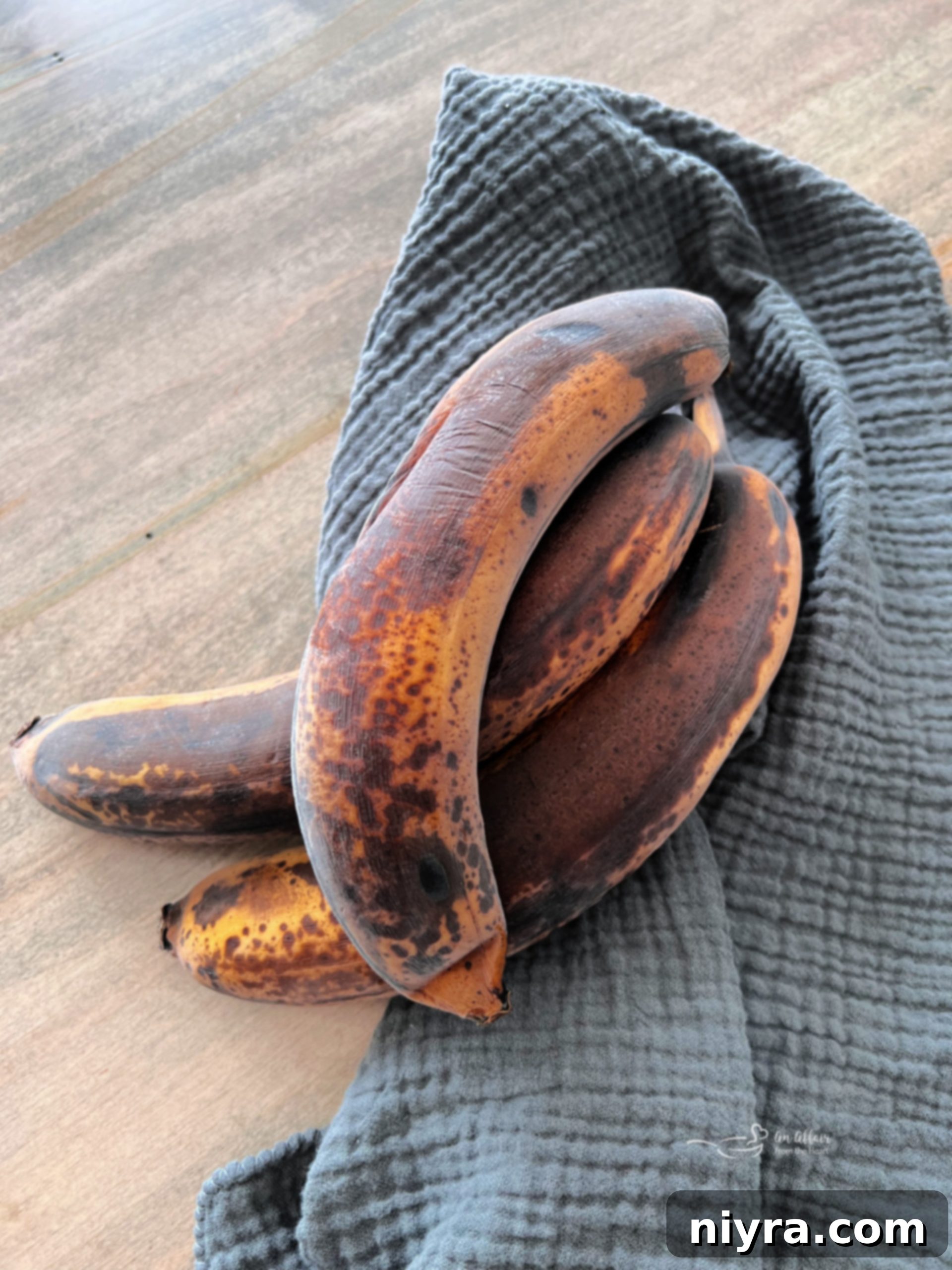Don’t let perfectly ripe bananas go to waste! Instead of discarding them, transform them into a versatile ingredient for countless delicious recipes by simply freezing them. This comprehensive guide will walk you through multiple effective methods for freezing ripe bananas, ensuring you always have this nutritious fruit on hand. Plus, we’ll explore a plethora of mouth-watering recipes that put your frozen bananas to excellent use, from smoothies and baked goods to decadent desserts.
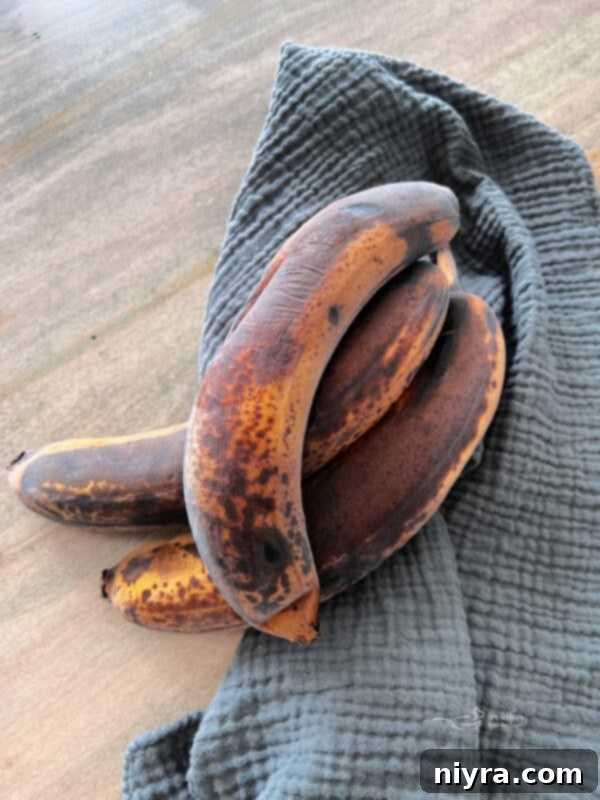
For many households, bananas are a staple. However, they have a notoriously short window of peak ripeness. You buy them green, patiently wait for them to turn bright yellow, and then suddenly, brown spots appear. This rapid ripening often leads to bananas sitting unused on the counter, destined for the trash if not acted upon quickly. But what if you could extend their life indefinitely and lock in that perfect sweetness?
The solution is simple and incredibly effective: freezing! Freezing ripe bananas not only prevents food waste but also creates a convenient, ready-to-use ingredient that can elevate your culinary creations. Whether you’re craving a refreshing smoothie, a comforting loaf of banana bread, or a healthy “nice” cream, having a stash of frozen bananas makes it effortless.
No longer will you have to rush to use those perfectly speckled, sweet bananas. By learning the right techniques to freeze them, you unlock a world of culinary possibilities. Just imagine: you want to whip up a quick smoothie, and perfectly ripe banana slices are waiting in your freezer. Or, a sudden craving for banana bread strikes, and you have the ideal mashed bananas ready to go.
Don’t let those valuable “naners” end up in the bin! Give those brown bananas a delicious second life. After all, wouldn’t they rather be part of a scrumptious banana bread recipe or a rich double chocolate banana muffin recipe than contribute to your trash?
Why Freeze Ripe Bananas?
Freezing bananas is more than just a way to reduce waste; it’s a smart culinary strategy that offers numerous benefits:
- Prevents Food Waste: This is the most obvious advantage. Instead of throwing away overripe bananas, you preserve their flavor and nutrients for future use.
- Cost-Effective: You can buy bananas in bulk when they’re on sale, freeze them, and save money in the long run.
- Always Have Ripe Bananas: No more waiting for bananas to ripen or being disappointed when they’re too green for your recipe. Your freezer becomes a reliable source of perfectly sweet, ripe bananas.
- Convenience for Quick Meals: Frozen banana slices are a game-changer for smoothies and “nice” creams, adding instant chill and creamy texture without the need for ice.
- Enhances Baking: Overripe bananas are ideal for baking due to their increased sweetness and moisture. Freezing them locks in this prime state, making them perfect for breads, muffins, and cakes.
- Nutritional Value: Bananas are packed with potassium, vitamins C and B6, and dietary fiber. Freezing preserves these valuable nutrients, allowing you to incorporate healthy goodness into your diet effortlessly.
Mastering the Art of Freezing Bananas: A Comprehensive Guide
Frozen bananas are an incredibly versatile ingredient, perfect for enhancing everything from smoothies and homemade ice cream to muffins, breads, and various desserts. Beyond their convenience, they also contribute a wealth of potassium and other vital nutrients to your dishes. But what’s the optimal way to freeze those leftover or overly ripe bananas? Below, you’ll discover three simple yet effective methods for freezing ripe bananas, ensuring you always have them readily available for any culinary need. Properly frozen bananas can maintain their quality in the freezer for 3 to 6 months.
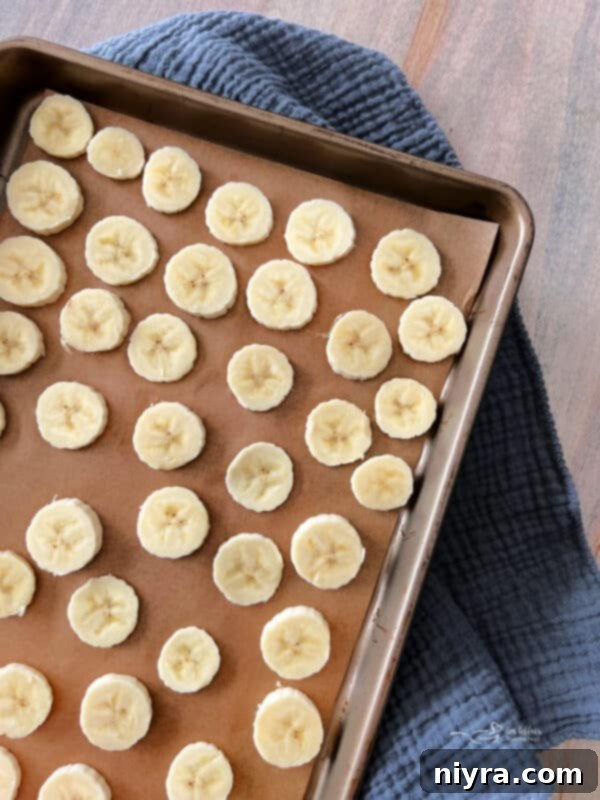
Method 1: How to Freeze Banana Slices – The Single Layer Freeze Technique
This “single layer freeze” method is ideal for ensuring that your banana slices remain separate and easy to portion out. It’s particularly recommended for bananas intended for smoothies, shakes, and homemade ice cream, where individual pieces are preferred over a clumped mass.

Step-by-Step Method:
- Preparation: Begin by peeling your ripe bananas. Then, slice them crosswise into uniform ½-inch thick pieces. Consistency in thickness helps them freeze evenly.
- Flash Freezing: Arrange the banana slices in a single layer on a baking sheet that has been lined with parchment paper or a silicone mat. Ensure there’s ample space between each piece to prevent them from sticking together. Transfer the baking sheet to the freezer for 1-2 hours. This crucial “flash freeze” step is what prevents the slices from clumping into a solid block.
- Storage: Once the banana slices are completely frozen solid, remove them from the baking sheet. Transfer them to an airtight freezer-safe container or a heavy-duty freezer bag. For best practice, remember to label the container or bag with the date of freezing and the quantity (e.g., “3 bananas, sliced”).
- Usage: These individually frozen banana slices are perfect for immediate use in smoothies, shakes, and delicious “nice” cream. There’s no need to thaw them beforehand; just add them directly to your blender for a thick, cold, and creamy result.
Method 2: How to Freeze Whole Bananas
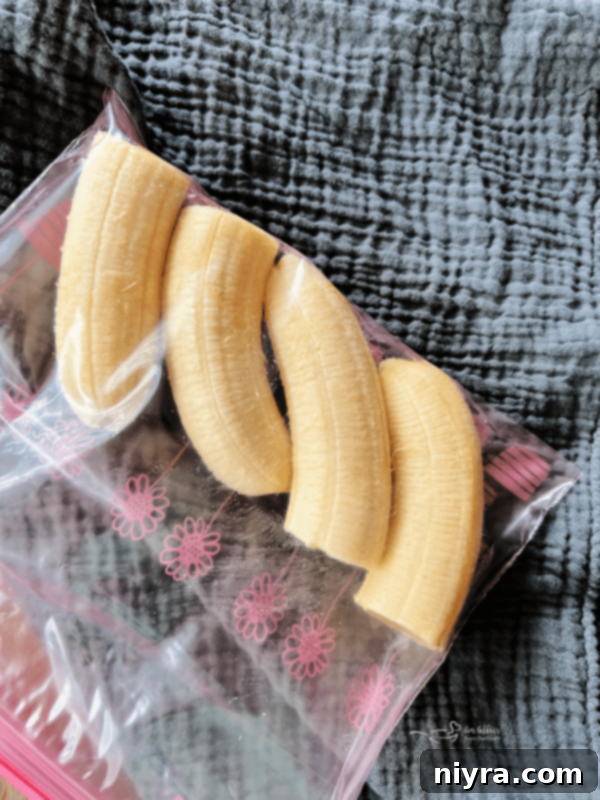
Wondering, “Can you freeze bananas whole?” Absolutely! Freezing whole bananas is an incredibly convenient method, especially when your recipes, such as certain breads or cakes, call for a specific number of bananas. This approach is not only effortless but also remarkably quick. While you can technically store whole bananas in their peels, many prefer to peel them first for easier use later. Even when frozen whole, bananas are surprisingly easy to cut with a knife if you decide you need slices later.
Step-by-Step Method (Peeled):
- Peel: Start by peeling the ripe bananas completely.
- Container: Place the peeled bananas into an airtight freezer-safe container or a sturdy freezer bag. If you opt for a freezer bag, make sure to press out as much excess air as possible before sealing it to minimize freezer burn.
- Label: Label the container or bag clearly with the freezing date and the quantity of bananas inside.
Alternative (In-Peel Freezing): Alternatively, and perhaps the “lazy way” as some call it, you can simply place the unpeeled bananas directly into the freezer. This eliminates the need for bags or containers initially; just pop them into a freezer door pocket or drawer. While the peel will turn dark brown or black in the freezer, the fruit inside remains perfectly fine and protected. When ready to use, simply thaw slightly, and the peel will become easier to remove, allowing you to squeeze out the soft, defrosted banana like soft-serve ice cream.
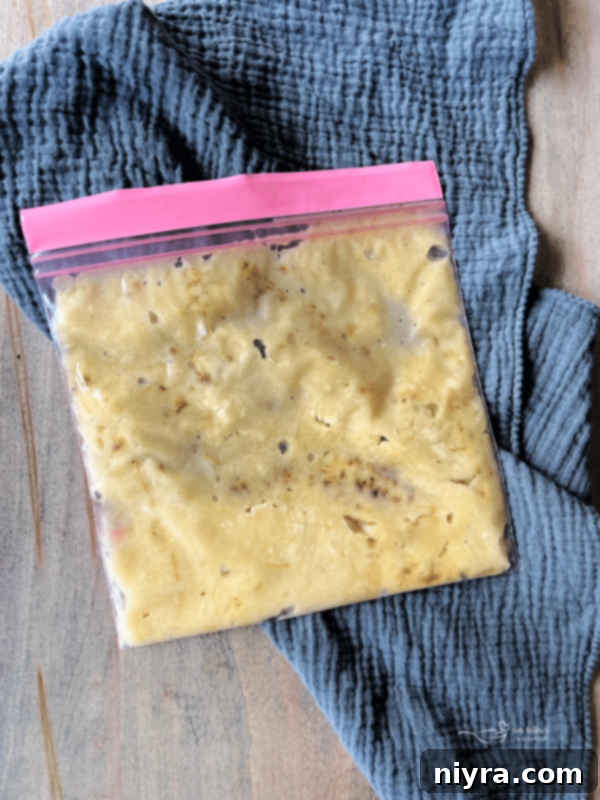
Method 3: How to Freeze Mashed Bananas
This method is exceptionally useful for freezing overripe bananas, making them perfectly suited for a wide array of your favorite baking recipes. Since you won’t be freezing the bananas whole, precise labeling of your containers with the quantity will be particularly important for easy recipe integration. An added bonus of this method is its efficiency in saving freezer space, as the flattened bags or containers stack neatly.
Step-by-Step Method:
- Preparation: Begin by peeling your ripe bananas. Then, mash them thoroughly using a fork or potato masher until you reach your desired consistency – some prefer a smoother mash, while others like a few small chunks.
- Portioning and Storage: Transfer the mashed bananas into an airtight freezer-safe container or, ideally, a freezer bag. If using a freezer bag, press out as much excess air as possible before sealing the bag. To maximize convenience for future baking, consider freezing the mashed bananas in pre-measured portions (e.g., the equivalent of 1 or 2 bananas per bag), as many recipes call for specific quantities of mashed banana.
- Labeling: Clearly label each container or bag with the freezing date and the exact quantity of mashed bananas (e.g., “Mashed bananas, 2-banana equivalent, 1 cup”). This precise labeling will save you time and guesswork when you’re ready to bake.
How to Freeze Bananas Without Browning Them (Completely)
When you utilize any of the freezing methods described above, your bananas should generally freeze without significant browning. However, it’s important to note that if your bananas were already quite overripe with brown spots before freezing, they might retain some of that initial discoloration. The primary reason bananas might turn an undesirable brown in the freezer is exposure to air.
To help prevent browning and maintain their best appearance:
- Use Airtight Containers: Always store your bananas in truly airtight containers or heavy-duty freezer bags.
- Remove Excess Air: If using a freezer bag, make it a point to squeeze out as much excess air as possible before sealing. This creates a vacuum-like seal that protects the bananas from oxidation.
Even if your frozen bananas do show some browning, rest assured that they are still perfectly fine and safe to use for all your recipes. The browning is purely an aesthetic change due to oxidation and does not impact their flavor, sweetness, or suitability for baking and blending.
How to Thaw Frozen Bananas for Baking and Beyond
While frozen banana slices can often be used directly in smoothies, many baked goods require your bananas to be defrosted first. Understanding the thawing process and what to expect is key:
- Refrigerator Thawing: For a hands-off approach, transfer your frozen bananas to the refrigerator. Depending on their size (whole vs. slices), this method will take approximately 5-6 hours, or even overnight for whole bananas.
- Room Temperature Thawing: If you’re in a bit more of a hurry, you can defrost bananas on your kitchen counter at room temperature. This method typically takes only a couple of hours for slices or mashed portions, while whole bananas will take longer.
- Microwave Thawing: For the quickest thaw, especially for mashed bananas, you can use the microwave on a low setting (e.g., defrost) in short bursts (30 seconds to 1 minute), stirring occasionally, until soft. Be careful not to cook them.
- What to Expect After Thawing: It’s crucial to note that once bananas are thawed, their texture will change significantly. They will appear quite mushy and will release a considerable amount of liquid. Do not discard this excess liquid! This moisture is incredibly valuable for baking, contributing to the overall tenderness and flavor of your cakes, breads, and muffins. Simply mash any remaining chunks and incorporate the liquid directly into your recipe.
Creative Ways to Use Frozen Bananas in Your Kitchen
The culinary possibilities with frozen bananas are truly endless. This blog is a treasure trove of banana-centric recipes, and here are some of our absolute favorites, categorized for your convenience!

Delicious Banana Cakes
Transform those sweet, defrosted bananas into moist and flavorful cakes that are perfect for any occasion. Their natural sweetness means you might even reduce added sugar!
- Blueberry Banana Cake (pictured above)
- Chocolate Banana Cake
- Banana Cake with Cream Cheese Frosting
- Banana Bread Coffee Cake
- Chocolate Banana Bars
- Banana Cream Jelly Roll
Irresistible Banana Pies
The rich, creamy texture of ripe bananas is a natural fit for decadent pies. Whether you prefer a classic or a fruity twist, these recipes are sure to impress.
- Coconut Banana Cream Pie (pictured above)
- Strawberry Banana Cream Pie
- Banana Cream Pie
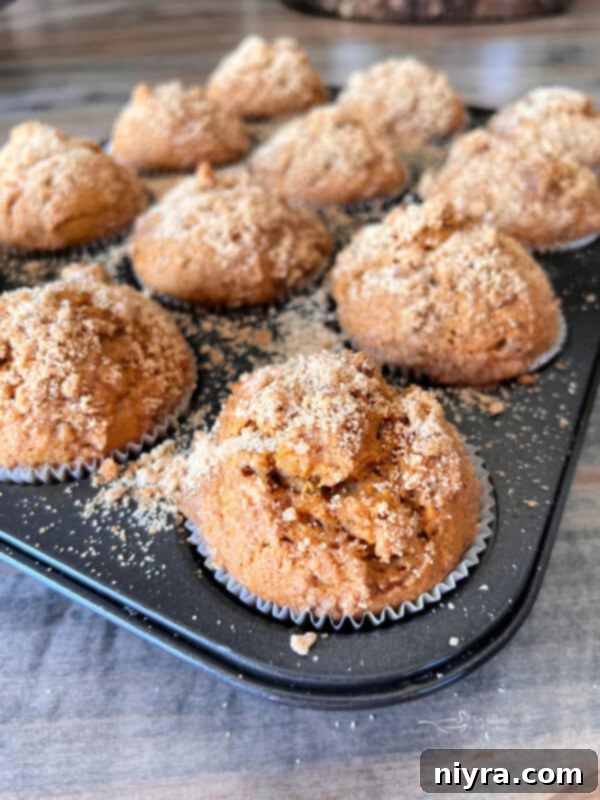
Comforting Banana Breads and Muffins
The quintessential use for ripe bananas! These recipes deliver incredible moisture and deep banana flavor, perfect for breakfast, snacks, or dessert.
- Cinnamon Streusel Banana Bread
- Pumpkin Spice Banana Muffins (pictured above)
- Chocolate Orange Banana Bread
- Banana Pecan Rolls
- Baked Banana Fritters

Refreshing Smoothies, Shakes, and Ice Cream
Frozen banana slices are essential for creating thick, creamy, and naturally sweet beverages and frozen treats without added sugar or dairy.
- Banana Berry Fiber Smoothie Recipe
- 4 Ingredient Peanut Butter Banana Ice Cream (pictured above)
- Banana Cream Pie Shakes
- Strawberry Banana Smoothie Bowl

Hearty Banana Breakfasts
Start your day right with these delicious and nutritious breakfast options that ingeniously incorporate the sweetness and flavor of bananas.
- Banana Bread Pancakes (pictured above)
- Baked Banana Donuts
- Banana Bread Quinoa Breakfast Bowls
Beyond the Kitchen: Unexpected Banana Uses
Bananas are incredibly versatile, even beyond edible recipes. Explore some unique and surprising applications for this amazing fruit.
- Banana Botox Mask (for skin care!)
- Chocolate Dipped Frozen Bananas (a simple, delightful treat)
- Elvis Cheese Ball
- Banana Peels as Fertilizer in Gardens (eco-friendly gardening!)
You can discover all of my banana-containing recipes effortlessly by using the search function for “banana” right here on my website!
Essential Tips and Tricks for Freezing Bananas
To ensure you get the most out of your frozen banana stash, keep these valuable tips in mind:
- Freezer Lifespan: While bananas can technically last longer than 6 months in the freezer, it’s generally advisable to use them within this timeframe to prevent the development of freezer burn, which can affect texture and flavor.
- Optimal Ripeness for Freezing: Always freeze bananas when they are fully ripe. Freezing halts the ripening process entirely, so freeze them at their peak sweetness. Bananas that are just beginning to show a few brown spots are at their ideal, most flavorful stage for freezing and subsequent use in recipes.
- Chocolate-Covered Frozen Banana Treat: Create a delightful and refreshing snack! Insert popsicle sticks into peeled, whole ripe bananas. Dip each banana into melted chocolate (milk, dark, or white chocolate work wonderfully). For an extra layer of flavor and crunch, sprinkle with chopped nuts, shredded coconut, or colorful sprinkles. Place these chocolate-covered bananas back into the freezer for at least 2 hours, or until the chocolate is firm. Absolutely yummy!
- Portion Control: Consider how you’ll use the bananas. Freezing in pre-measured portions (e.g., 1/2 cup mashed, 1 whole banana, 1 cup slices) saves time when you’re ready to cook or blend.

Need Ripe Bananas Now? 3 Quick Ripening Methods
Sometimes you need ripe bananas for a recipe, but all you have are green ones. Don’t despair! Here are three effective ways to speed up the ripening process:
1. The Paper Bag Method
This classic method will typically ripen your bananas in 1-3 days, depending on how green they initially were. Place your bananas in a paper bag (plastic bags won’t work as they trap moisture and can cause rot). For an even faster process, include a ripe pear, apple, or avocado inside the bag with your bananas. These fruits naturally release ethylene gas, a hormone that significantly accelerates fruit ripening. You can further speed up the process by placing the bag in a warm spot in your home, such as on top of your refrigerator.
2. The Oven Method (for Baking)
If you need super-soft, sweet bananas for baking within an hour, the oven method is your best friend. Preheat your oven to 300 degrees F (150 degrees C). Line a baking sheet with parchment paper or aluminum foil; this step is crucial for easy cleanup, as the bananas may release some sticky juices during baking. Place unpeeled bananas on the lined baking sheet, ensuring there’s a little space between each one. Bake for approximately 30 minutes, checking every 15 minutes. The bananas are ready when their peels turn completely black and the fruit inside feels very soft and mushy – perfect for mashing into your baked goods!
3. The Microwave Method (for Baking)
For a few firm bananas you need to soften quickly for baking, the microwave can do the trick in just a few minutes. Pierce the unpeeled bananas several times all over with a fork or a knife. Place the bananas on a paper plate or a microwave-safe dish. Cook them on high for 30 seconds at a time, flipping or turning them between intervals. Repeat this process until the bananas reach your desired level of softness. While this method won’t make your bananas as sweet as naturally ripened or oven-ripened ones, it will make them perfectly mashable and suitable for use in your various baking recipes.

Love this Guide? Pin it for Later!
Want to keep this comprehensive post on HOW TO FREEZE BANANAS readily accessible? Make sure to pin it to your favorite Pinterest recipe board before you navigate away! This way, you’ll always have these invaluable tips and tricks at your fingertips whenever you have ripe bananas to save or recipes to create.
By correctly freezing your bananas using these methods, you will guarantee a steady supply for all your favorite banana-based recipes. So, the next time you spot a fantastic sale on bananas at the grocery store, and you have available space in your freezer, don’t hesitate – GO BANANAS and stock up! It’s a simple step that significantly reduces waste and opens up a world of culinary possibilities.
This recipe guide was originally published on February 22, 2014. It has been thoroughly updated and revised to enhance the user experience, incorporate additional valuable information, and improve clarity. This refreshed version was reshared on May 18, 2023.
